Affiliate links on Android Authority may earn us a commission. Learn more.
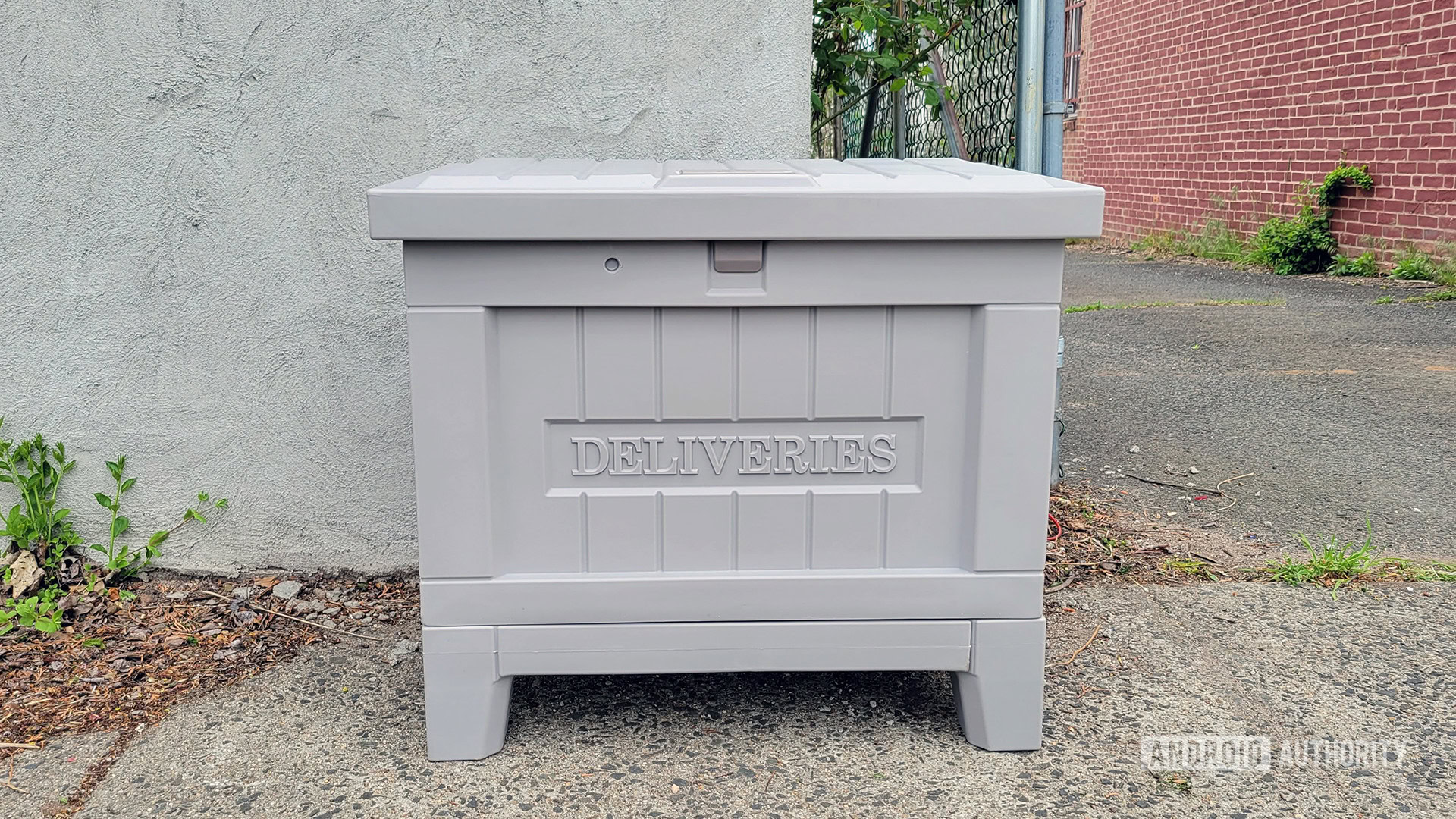
Yale Smart Delivery Box review: Too many caveats for this porch piracy fighter
Published onMay 22, 2021
Yale Smart Delivery Box
MSRP:
What we like
What we don't like
Yale Smart Delivery Box
If you’re fully invested in your smart home, the chances are good that you’ve started to expand outside of the house itself. Smart outdoor lighting, security cameras, and even smart driveway gates are all becoming popular. In this Yale Smart Delivery Box review, we’re going to tell you about another thing you could add to your collection: a drop box with a smart lock.
If you’ve ever had the problem of a porch pirate stealing your Amazon packages, you already know why this device could be useful. It gives your delivery drivers a safe place to put your shipments (or food deliveries). Once placed, you receive a notification and you can then lock the box from wherever you might be in the world. Now you know it’s safe! When you get home, a quick tap in the app unlocks the box, allowing you to bring the contents inside.
Sounds great, right? Unfortunately, in order for that ideal scenario to work, your home, delivery drivers, and general neighborhood will need to meet a fairly exhausting list of requirements.
What you need to know about the Yale Smart Delivery Box
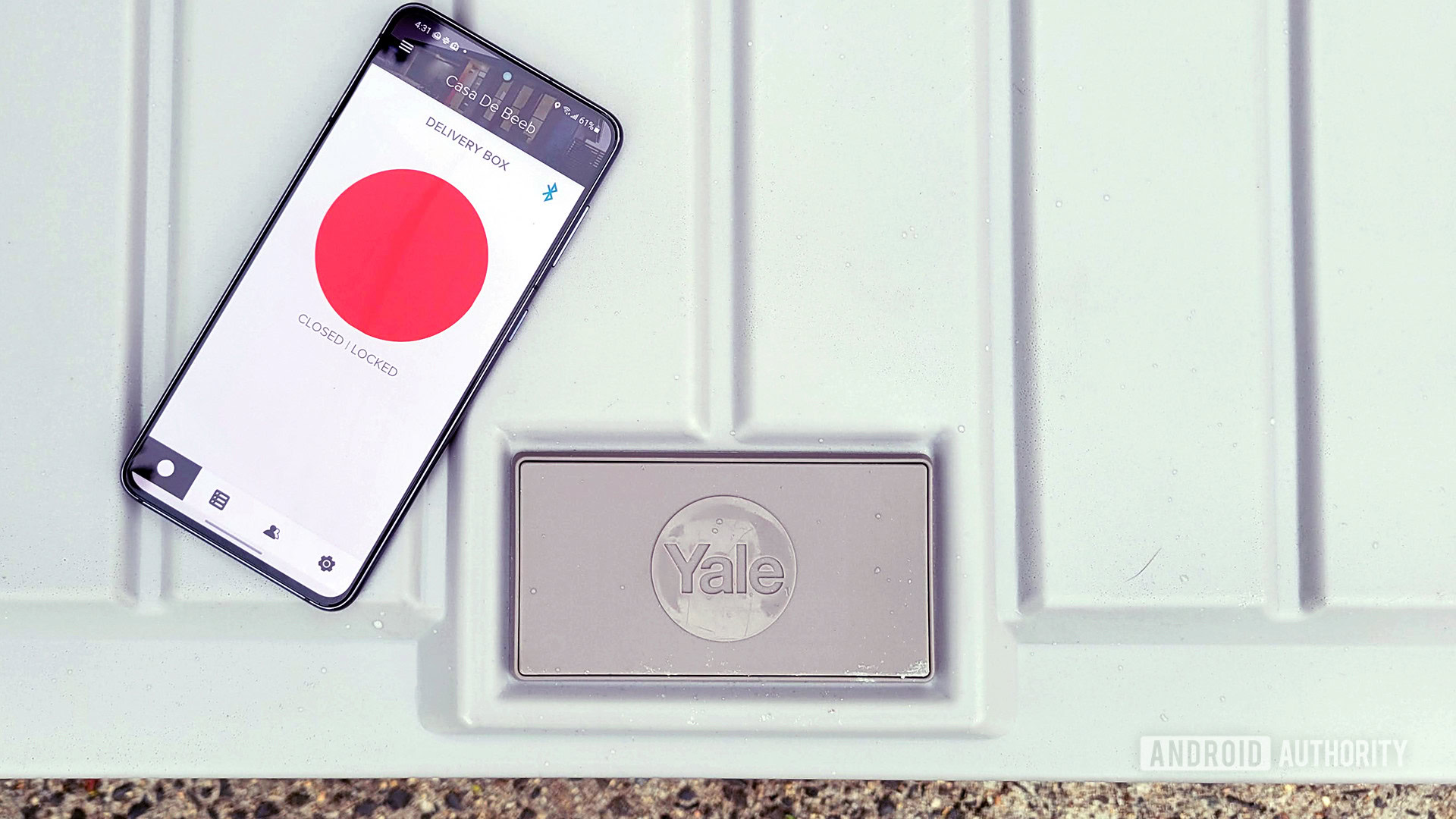
- Yale Smart Delivery Box: $279.99
- Delivery Box with Optional Keypad: $329.99
- Delivery Box with Optional Keypad and Cooler: $349.99
The Smart Delivery Box is big enough to fit a few medium-to-large parcels. As long as the parcel is under 16 x 22 x 13in, it should fit. The box on its own weighs about 30lbs, but you’ll need to increase that weight with sand to prevent theft of the box itself (more on that later).
There are two colorways for this product: Kent (used for this review) and Brighton, which is a darker gray. For some reason, only the Kent model is available on Amazon. You can get the Brighton variant from Yale’s own site.
Along with the box, you get a Yale Connect Wi-Fi Bridge with your purchase. This plugs into an interior outlet to create a connection between the box and your home’s wireless router. This bridge is not optional — without it, you would need to rely on Bluetooth to lock/unlock the box, which only works within a short range.
There are also two optional accessories. First, there’s a keypad that can be attached to the box itself (or placed nearby) that gives a traditional numeric code entry for the box. This keypad is wireless and runs on its own battery power. Second, there’s a cooler insert that would help keep perishables cool on a hot day — ideal for folks who plan to have groceries delivered.
For safety reasons, the interior of the box has an escape button should a child accidentally lock themselves inside.
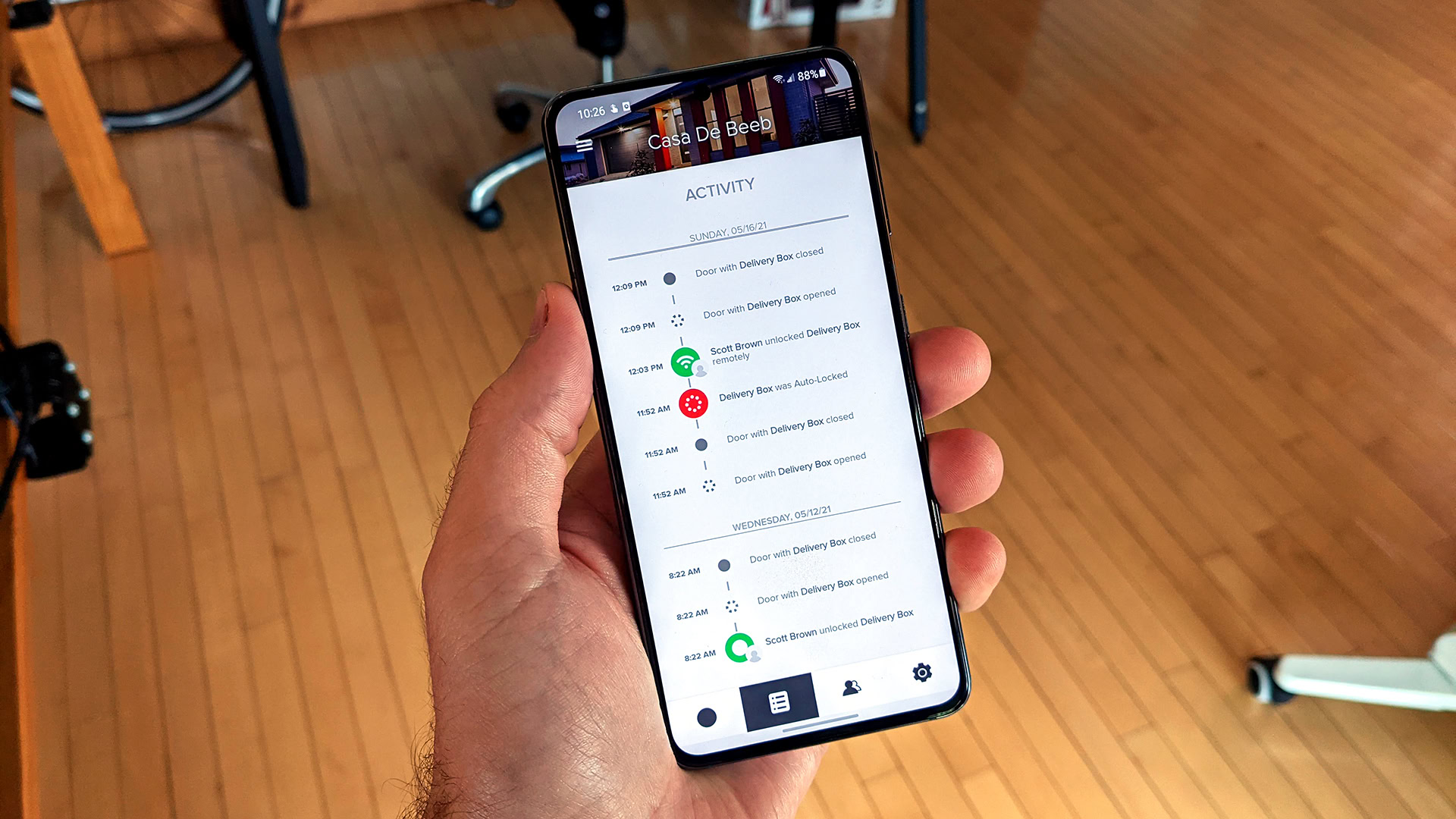
The box itself is literally one giant hunk of plastic. The locking latch, however, is electronic. It’s powered by a replaceable CR2 battery, which comes pre-installed. Yale says this battery should last for around six months. When the battery life is nearly dead, the connected app will alert you. You can also have it auto-unlock when the battery is about to die, just in case.
The lock has Wi-Fi and Bluetooth capabilities. With Bluetooth, you can lock or unlock the box using the app as long as you are within range (around 30ft unobstructed). If you only used Bluetooth, you could unlock the box in the morning on your way to work and set it to auto-lock when there’s a delivery. Then, when you get home, you could unlock the box and take out the contents.
Tested: How much does Bluetooth actually drain your phone battery?
However, with a Wi-Fi connection, you can lock/unlock the box from anywhere. You can also receive notifications on your phone whenever the box is opened, closed, locked, or unlocked. This is where the included Wi-Fi bridge comes in. The lock itself isn’t powerful enough to connect to your router directly, so the bridge needs to be in an indoor outlet no more than 10ft from the box. The app — available for both iOS and Android — gives clear instructions on how to set all this up (it only took me around 15 minutes). With Wi-Fi, the app will keep you posted on the status of the box, as seen in the Activity section of the app in the image above.
What’s good?
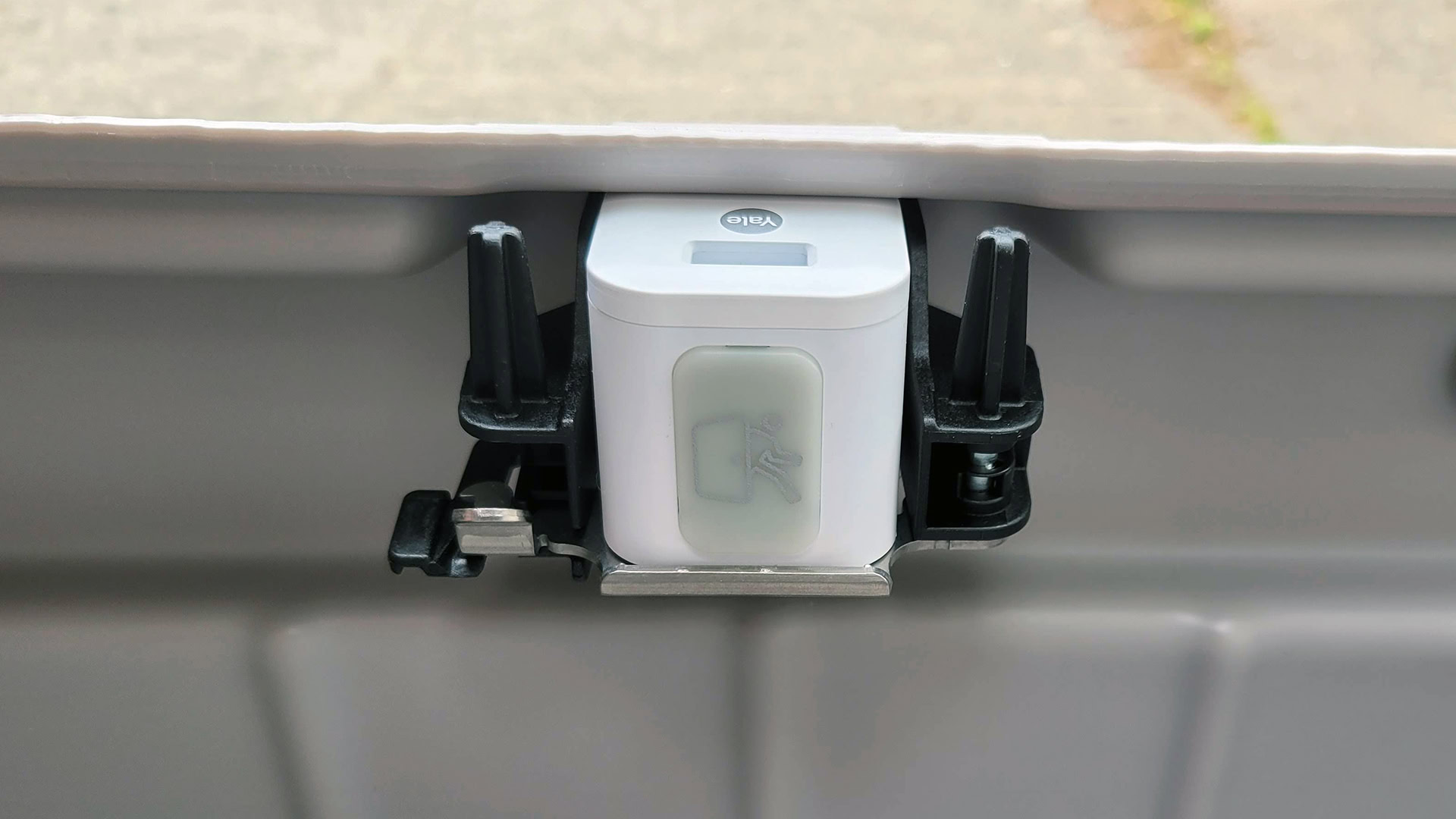
The overall concept of the Yale Smart Delivery Box is a terrific idea. I live in an urban neighborhood in a duplex with no front yard. With just one step out of my front door, I am on a public sidewalk. This makes package deliveries especially nerve-racking, as anyone walking by could just grab it.
Setting up the box (and the included Wi-Fi bridge) was a snap. To get the box assembled, you just need to attach a few bolts here and there, with the most integral of mechanisms — the lock itself — pre-installed at the factory.
Putting together the box and connecting it to the app was straightforward. The app is simple and intuitive.
Likewise, the Yale Connect app is very intuitive and simple. The app will automatically determine whether to use Bluetooth or Wi-Fi to connect to the box, depending on how close you are to it. There is quite a lag if you use Wi-Fi, as your phone needs to connect to the internet, connect with your router, connect with the bridge, and then connect with the box itself. However, as long as you can wait a few seconds for the unlock, you’ll be pleased. Bluetooth locks/unlocks are nearly instantaneous.
Yale has added compatibility with digital assistants, including Amazon’s Alexa, Google Assistant, and Apple’s Siri. This allows you to use voice commands or create routines to manipulate the box. I tried out Assistant voice commands and they worked well.
I also appreciated the look and construction of the Yale Smart Delivery Box. It feels very sturdy and the big “Deliveries” statement on the front makes it obvious what it’s for (although plenty of drivers still ignored it). It’s also great at keeping out the weather, which is essential for something like this.
What’s not so good?

For this Yale Smart Delivery Box review, the company sent me a unit that I set up and put outside. I didn’t have time to tether it, though, and the box itself was stolen within minutes. I kid you not. Yale sent me a second box to set up, and I refused to put it outside until I had a tether.
However, the box has no obvious way to tether it. There’s no hook or hole to put a chain through. This oversight is even more frustrating when you consider the instruction manual tells you that a tether is a good idea, even nudging you that a good one is available from Yale’s site. But the instructions don’t tell you how to connect that tether and, ironically, there are no tethers available from Yale.
Instead of (or in addition to) a tether, you can fill the bottom of the Smart Delivery Box with sand. This should add enough weight that someone running off with it would be tricky (although that didn’t stop folks in my neighborhood, clearly). For my purposes, I filled the bottom with sand and then roped the tether around the base before attaching it. This worked and no one has stolen the box yet. See the pictures below.
The placement of the box outside is also very tricky. The box needs to be within 10ft of the Wi-Fi bridge and the bridge needs to be inside and close enough to your router to connect to it. This means you can’t put the box at the end of a long driveway. In my case, there was nowhere to tether the box in the ideal placement at my house, so I needed to put it in a slightly awkward area.
Even after getting everything set up, I faced human issues. Passersby loved opening the box, either out of curiosity or to see if there was anything in it to steal, which sent me a notification. On top of that, few drivers even put packages in the box. Even though it says “Deliveries” right on the front, they still left packages in other places.
The bottom line here is that my home and neighborhood just don’t work for this product. If the Wi-Fi bridge had more range so I could position the box away from the street, that would have solved a lot of the problems. Even then, though, I would still face the tethering issue and the problem of drivers ignoring the box.
There’s another practical issue, though: there’s no way for a delivery driver to notify you that they’d like to open the box when it’s locked. For example, let’s say you leave in the morning with an unlocked empty box. At noon, a delivery driver opens the unlocked box and drops in a package. Your phone notifies you and automatically locks the box (or you manually lock it). However, at 1PM, another delivery driver shows up. The box is locked and the delivery driver isn’t likely to know your number to let you know they’d like to drop something off.
Everything about the Yale Smart Delivery Box works like a charm. It's only when you try to use it in real-world situations that it gets frustrating.
Fortunately, the optional wireless keypad partially solves this problem. With that installed, you could give your delivery driver a unique code that they could use to unlock the box whenever. Every time they do, you’ll be notified. Of course, this method only works if you have a consistent delivery driver whom you trust enough to give access.
The bottom line here is that the smart lock capabilities here work perfectly well, but the real-world application of those capabilities is messy.
Yale Smart Delivery Box review: Should I buy it?
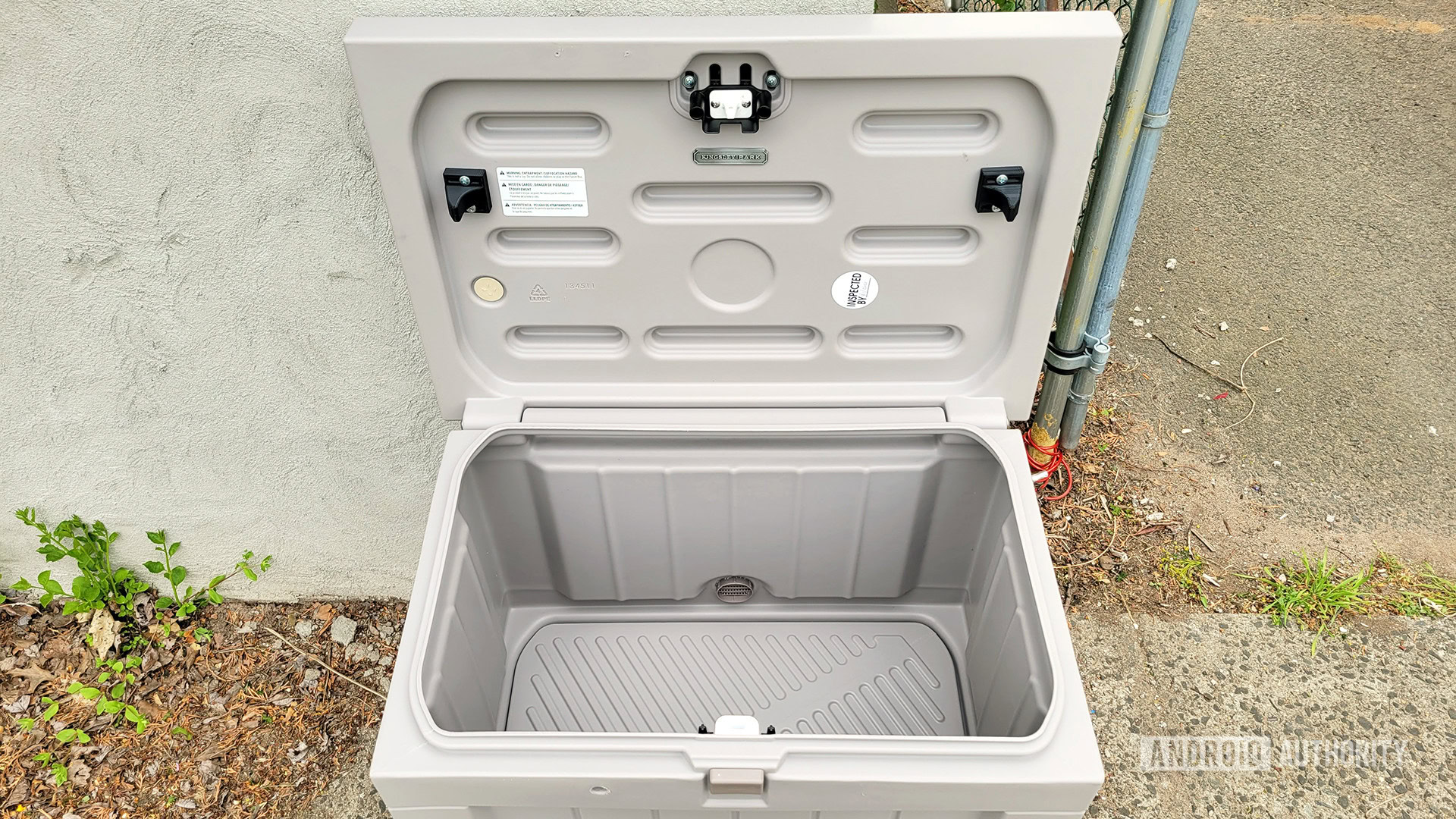
In order for the Yale Smart Delivery Box to really work for you, I recommend going off this checklist. If you can’t check everything off, you probably would be more frustrated by this than anything else:
- Your front door/package delivery area is far enough away from the street that general passersby won’t open the box out of curiosity.
- There is an ideal spot in your delivery area to tether the box which is also less than 10ft from an interior outlet.
- You usually see the same drivers for most of your deliveries so you can explain to them how the box works (and give them a code if you opt for the keypad version).
- You are willing to put up signage to notify those drivers you haven’t talked to what the box is for.
Now, there are lots of other possible use cases for this. For example, using it indoors in an office setting could be ideal, as could the mail area of a small apartment building. However, Yale is definitely positioning this as a porch pirate deterrent, which is tricky to do when there are so many caveats to making it more useful than annoying.
If Yale could increase the range of the bridge significantly as well as integrate the box’s functions with the major delivery companies (FedEx, USPS, UPS, etc.), this could be a winner. As it is, though, only very specific people will fit the ideal conditions for this to be a worthwhile purchase. As someone who doesn’t fit those conditions, a motion-sensing security camera is still my ideal porch pirate solution.
